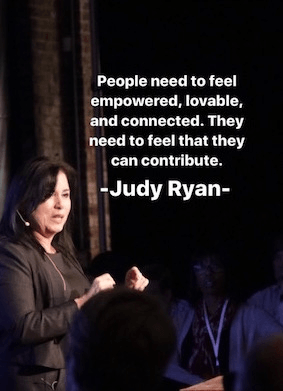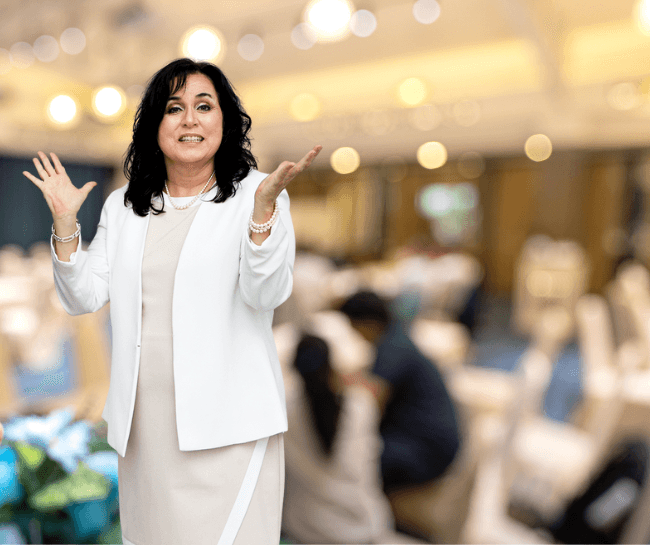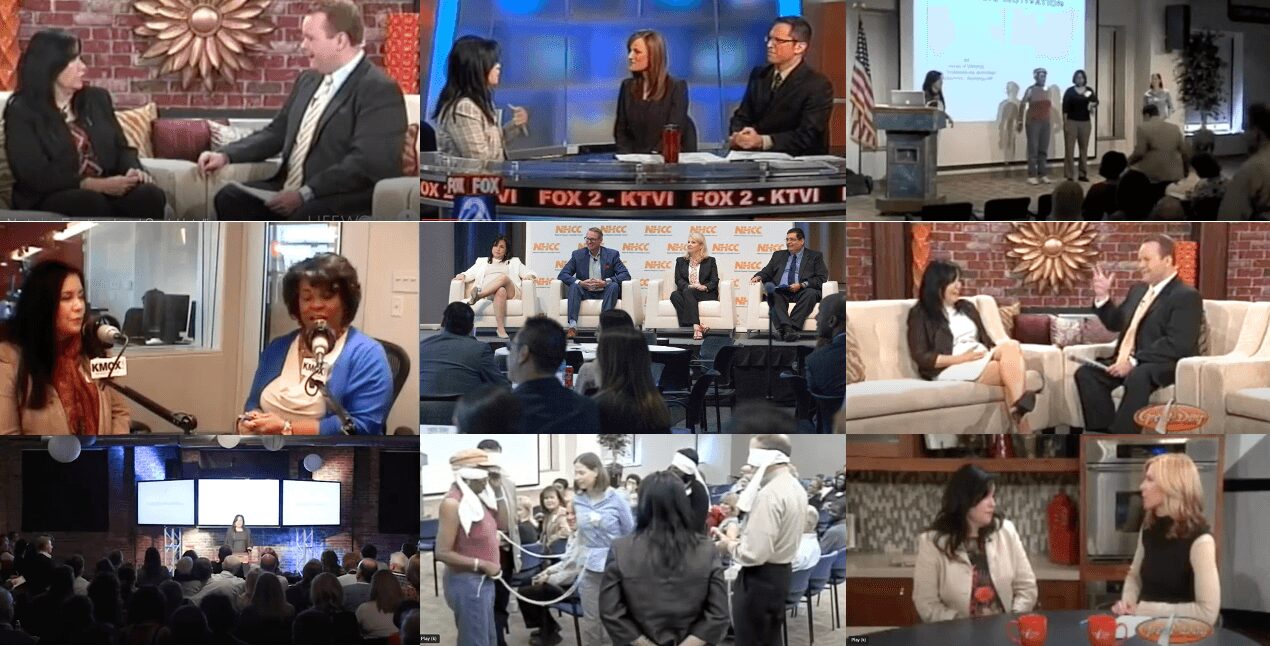We caught up with the brilliant and insightful Judy Ryan a few weeks ago and have shared our conversation below.
Judy, looking forward to hearing all of your stories today. Innovation comes in all shapes, sizes and across all industries, so we’d love to hear about something you’ve done that you feel was particularly innovative.
We won an Award called The Vanguard Award for INNOVATION from the St. Louis Mental Health Board for our work in multiple school reform projects. The innovation is that we worked with ADULTS (parents, teachers, administrators, counselors, nurses, secretaries, community volunteers), and STUDENTS, all at the same time. In this way, they all received the same concepts, terms, tools and processes within a responsibility-based culture system. Emotional and social intelligence and trust were fostered so everyone was supported in learning and applying strategies and tools to manage their relationships, productivity, engagement and progress plans. Because of this work, many high school students in some of the most at-risk neighborhoods, gained the encouragement, skills and support needed to remain in high school and graduate.
When we work in corporate, non-profit, and government settings in many industries, we also foster the innovation of creating leadership in every person, from CEO to front-line staff so that together they co-create a responsibility-based culture, on purpose, and simultaneously. We also provide an innovative KIND of culture model, which is responsibility-based and purpose and values-based with shared power. We also provide an innovative KIND of IMPLEMENTATION which is immersive, with flipped best practices from education where staff are responsible to facilitate teaching what they’re learning and engage in reverse and peer mentoring. Entire workforces learn to grow in awarenesses that then shifts to changed behaviors. Our implementation is comprehensive, consistent, scalable and sustainable over time because it’s built on a digital platform and overseen by culture experts who ensure effective adoption and integration.
A story we like to tell, even to corporate audiences, is about an 8th grader in a classroom meeting. This was a school in which only one teacher was using our model. I was invited to sit in on her classroom meetings for a day because she knew transfer of responsibility was her primary task in helping her students apply what they were learning. A boy came in and said, “I’m being bullied by my homeroom teacher.” He wrote this on the classroom meeting agenda. When it came time to hear his issue, he said, “We are being asked to put our hands on our hearts and say a ‘peace pledge’ in which we state, ‘I pledge to use my words and actions for peace.’ I don’t have a problem with the pledge. I have a problem with the teacher who frowned at us and shook her finger, and in all seriousness said, ‘If I catch any of you NOT doing the pledge, I will give you a detention!'”
When the student shared this issue, the teacher said, “Judy, can you show me how you’d transfer responsibility to him?” I said, “Sure.” I asked him, “Do you want peace in the school?” He said, “Yes.” I said, “Do you want peace with the teacher who’s bullying you?” He said, “Yes.” I said, “Ok, then are you willing to look at your role in this; where you might be doing war with her?” He got defensive and said, “Me?! I’m the one being bullied!” I said, “Yes, I know. But you are the one who wants peace and you are the one asking for help. She is not here doing that” He said, “Ok, I’m willing.”
I asked him, “Do you ever say bad things about her behind her back?” He said, “Yeah, I hate her.” I said, “Hmmm…. Do you see anything warlike about ‘hate’ and ‘gossip’?” He said, “Yeah, I guess.” I said, “Ok, do you ever try to go to her when things are peaceful and have a respectful one-on-one conversation with her about things like this?” He said, “No, we’re all afraid of her.” I said, “Do you know that when you fear another person, you’re in attack mode with them?” He said, “No, what do you mean?” I said, “When a dog comes running up to you baring it’s teeth and barking aggressively, does the dog get more hostile or less hostile if you become afraid?” He said, “More hostile.” I said, “Yes, why?” He said, “I don’t know. I never really thought about it.” I told him, “The dog gets more hostile because your fear shows him you see him as the ‘enemy’; that you have him in ‘the monster box’ and he will become more hostile in reaction to that. People are the same.” He said, “Wow, I never knew that.” I said, “I know, but now you do. You now see your part with this teacher by using hate, gossip, and fear. Now that you know this and you want peace, what do you want to do?” He said, “I want to go to her and talk with her. I am just not sure how to do it.” I said, “Well, isn’t is great that you have the support of your classmates, your teacher and even a coach today?”
What I found so powerful is that other kids in this class said, “I’ll go with you. I want peace with her too and I have also been doing war with her. I just didn’t know it.” The teacher who was leading this classroom meeting also came to me and said, “I want to leave my role as a teacher at the end of this year and come to work with you in your school reform work.” She did so. She said that day, “We have signs in our halls that say, “Accountability” and “Respect” and “Trust” but it’s about the same as saying, “Reading is essential” and having no reading class.” What I learned is that when one person raises their level of personal responsibility, others are inspired to do so too. Everything about our model and implementation is innovative and yet it is converging with where organizational culture is evolving at this time.

Judy, before we move on to more of these sorts of questions, can you take some time to bring our readers up to speed on you and what you do?
I raised my 5 children in Alfred Adler’s psychology and I became a parent educator in it for about 20 years. A book called The Courage to Be Disliked was written about Adler that said he was at least 100 years ahead of his time. He was born in 1870. I had always thought the same thing. He coined the phrase inferiority complex. He was teaching on things that Brene Brown and Simon Sinek speak on today with some of the same pushback he received. That’s because to understand that to become a fully actualized human being, people must recognize they are thwarted by outdated practices based in control that begin in homes, schools and in society overall in an attempt to develop good citizens. Control tactics are so widespread that people fail to see they are the root causes of all struggles in and between people which results in an overall fear in many people of their personal power. As a result, they do not celebrate it and do not learn to guide it. By understanding what is actually needed to expand human potential in everyone, people would never again choose win/lose, power-over, power-under, competition and zero-sum ways of operating. That’s why I have felt out ahead of this time with this model for the many years I have been providing it and using it. Only now, when many systems are clearly faltering, are people seeking real and significant systemic change. That is what I’ve been gearing up for in building my scalable culture system and implementation process.
What sets us apart from others is that rather than promoting power-over and power-under dynamics, we promote power-within, power-between, power with, and power-for (all). This is a radical shift in consciousness within human systems. Our culture model is one in which purpose and values are central, freedom WITH responsibility is balanced, one where people come to lead and follow with agility, and to consider consequences they cause others so that helping everyone be wildly successful is a primary goal. In our model, critical thinking is intentionally developed and everyone approaches their life and work in a holistic way so they get to be who they authentically are in every facet of their lives.
What also makes us so different is that the way we distribute our model is fully. As a personal example, when my kids were little, they all knew how to run a family meeting by the age of 5. They learned many things that they taught their friends. They and we knew how to redirect negative behavior rather than using punishment, bribing or permissive and enabling reactions. Our model has huge ramifications for our society at large and has been proven to lower recidivism; repeat incarceration, from 60-70% nationwide to 4% where it’s been used. We see similar outstanding results in our work with our clients.
What I’m most proud of is our fully scalable model and implementation called CultureEX™ that includes individual and group training but so much more. I’m proud that our pioneering work is now converging with models focused on psychological safety, trauma-informed principles, agility, equity and inclusion, high trust, and teal as a shift from other models that rely on hierarchy to a model in which shared power occurs. With a conscious mind-shift and new skills and support, people experience healthy belonging and significance that enables them feel empowered, lovable, connected and contributing.

What’s been the most effective strategy for growing your clientele?
In the early days of my company, when I would share that our purpose is “to create a world in which all people love their lives,” marketing experts would say to me, “Business owners and executives don’t care if their people love their lives. That will not be a meaningful thing to them.” I came to realize that our purpose is a good thing to share because we don’t want to work with business owners or leaders who don’t care about this. We have learned that one of the most effective things we do is focus on our psychographics. For example, a business losing $8.8M per year in turnover, responded to a proposal for $250K for work in 3 out of 10 of their worst facilities, with projected savings of at least $1.5M in revenue, with these words, “I don’t know. We’re kind of used to losing the $8.8M. We don’t know what we are really getting by spending the $250K.” This person did not have the psychographic listed as #2 below.
These are OUR PSYCHOGRAPHICS :
1. Does this leader/prospect/partner have AWARENESS? (Focuses on current and future trends, culture evolution, revenue generation, ability to pivot, agility, and what ensures competitive advantage)
2. Does this leader/prospect/partner recognize NEEDS? (are they aware of losses that can be plugged and intolerant of them, motivated to create new?)
3. Does this leader/prospect/partner have PASSION/CONVICTION? (are they chomping at the bit to stay relevant, competitive, effective, and committed to develop their people and to creating continuous advancements?)
4. Is this leader/prospect/partner INNOVATIVE? (NOT risk averse but rather courageous, with a positive and helpful ego in which he or she develops other leaders, provides the best support and encouragement?)
5. Is this leader/prospect/partner willing to INVEST time/budget? (in culture evolvement and people development, supporting performance, and engagement at all levels within any organization, professional or personal?)

Let’s talk about resilience next – do you have a story you can share with us?
I remember witnessing a highly accomplished, award-winning business woman in a mistaken goal of negative behavior called the mistaken goal of Significance. In this goal, she was clinging to a belief she was not ok and not enough. Some people call this imposter syndrome. Even though she had accomplished tremendous success in her business, including outstanding revenue growth and services for many people, I could see she was wreaking havoc by unconsciously trying to get people to take her down and invalidate her. She did this by puffing up, bragging, and demeaning others. She wanted to grow her business from $35M to $100M and I could see this was getting in her way. As I recognized this pattern in her, and even though this was a sales call with others present, I redirected her by acknowledging her accomplishments and asking her to let me help her with a blind spot holding her back in her business. I was anticipating what would come next and reminded myself that it would signal progress!
As expected, she upped the ante. This is when a person gets worse before they have a breakthrough. She lit into me about how I was not as good as she was at running a business; that I didn’t have her experience, revenues or awards, so how could I possibly help her when I was the one who could learn so much from her?! I managed the redirect by mirroring her words and feelings by saying, “You are more accomplished than me. You do have more awards, more revenue and could teach me a lot.” I refused to take her bait to invalidate anything about her. Then, I did the next part of redirecting her. I said, “I’m sure that if you could see and resolve something I see in your way, you would have certainly done so. I can help you with this but you have to be willing to let me. Are you?”
Only after influencing her by refusing to invalidate her, was she redirected, and in this instant, she showed me the underbelly of her darkest fears. It was incredibly powerful to witness and despite being a tense, somewhat intimidating exchange – redirecting negative behavior is not for the feint of heart, especially while in front of others, I could feel the healing within her and myself. I could feel the power of positive intention and commitment to supporting the best in people not their fearful, limiting beliefs. Redirecting her increased my abilities to love and appreciate her where at one time I would have felt only repelled by her outer façade.
I am writing this because this is a critical time in our evolution as people. We can learn to shift negativity and fear to positivity and faith in one another and ourselves. Not just in our businesses but in all settings. The more we understand how to counter fearful and limiting beliefs, the faster we will heal ourselves and them, and collectively come into our magnificence and creativity instead of engaging in ongoing struggles and mediocrity or worse. This is not only good business; this is good humanity. Only then can we solve our many current and future challenges. Only then can we cause amazing things for and with one another and believe in, and co-create all possibilities needed as we evolve.
Contact Info:
- Website: https://www.lifeworksystems.com
- Facebook: https://www.facebook.com/lifeworksystems
- Linkedin: https://www.linkedin.com/in/judy-ryan/
- Twitter: https://www.twitter.com/lifeworksystems

Image Credits
N/A


